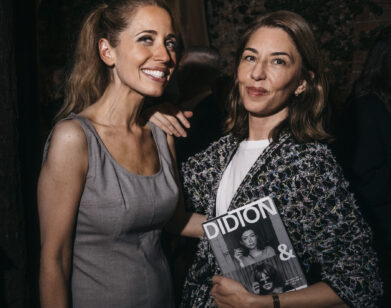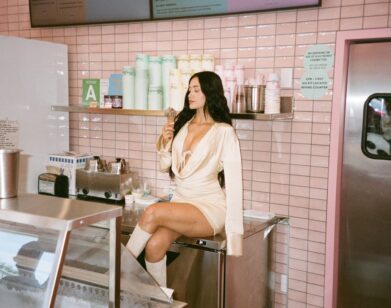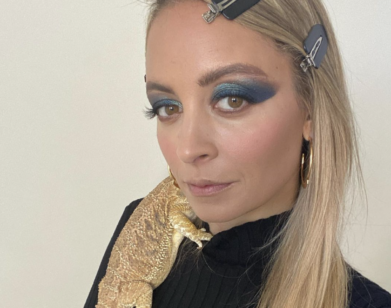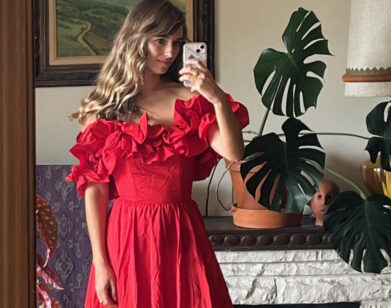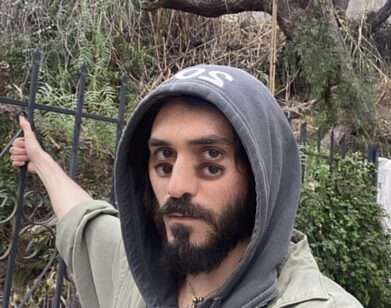plants
Devendra Banhart and Noah Georgeson Really Love Trees
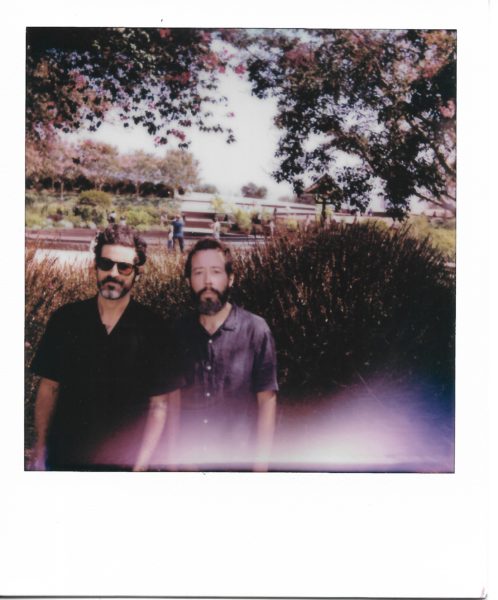
All photos courtesy of Devendra Banhart and Noah Georgeson.
Interviewing Devendra Banhart can feel like chatting with a— less dastardly, more affable—Captain Jack Sparrow. The 40-year-old musician is a kaleidoscope of eccentricities and non sequiturs: he sits at his computer during our Zoom call, holding a piece of fabric over his eyes while naming his favorite colors—or rather, the colors that move him most (“There’s something really eerie about a burnt umber.”)
Over the course of his nearly 20-year career, the Los Angeles-based artist has released ten albums full of mythical, imagery-heavy narratives that span the realms of folk, rock and new age. This month, he released Refuge, his 11th studio album, in collaboration with his friend and producer Noah Georgeson. The record, a meditative soundscape that’s the perfect salve for apocalypse jitters, was born of the pair’s Buddhist travels and some of their shared childhood memories. “We both spent about 90% of our childhoods inside health food stores,” says Georgeson, recalling the “nostalgic ’80s new age music that we would hear as kids growing up in California” with hippie parents. Indeed, moving through Refuge’s 11 tracks elicits the same sinus-clearing, foliage-conjuring sensation as working your way down a well-stocked essential oils aisle: “Asura Cave” features recordings from isolated natural sites interwoven with chants recorded in a Nepalese convent, and “Three Gates” has the yogic quality of a sound bath.
For the duo, Refuge was a chance to carve out moments for reflection in an increasingly chaotic world. “You can tune in and tune out,” says Georgeson, “I’m okay with this record not being an active listening experience.” To illustrate their point, the pair took a walk around their favorite natural refuges in Los Angeles while listening to the record, and photographed some trees for our viewing pleasure. Below, the pair takes a look at (and, perhaps, smokes?) some good tree(s).
———
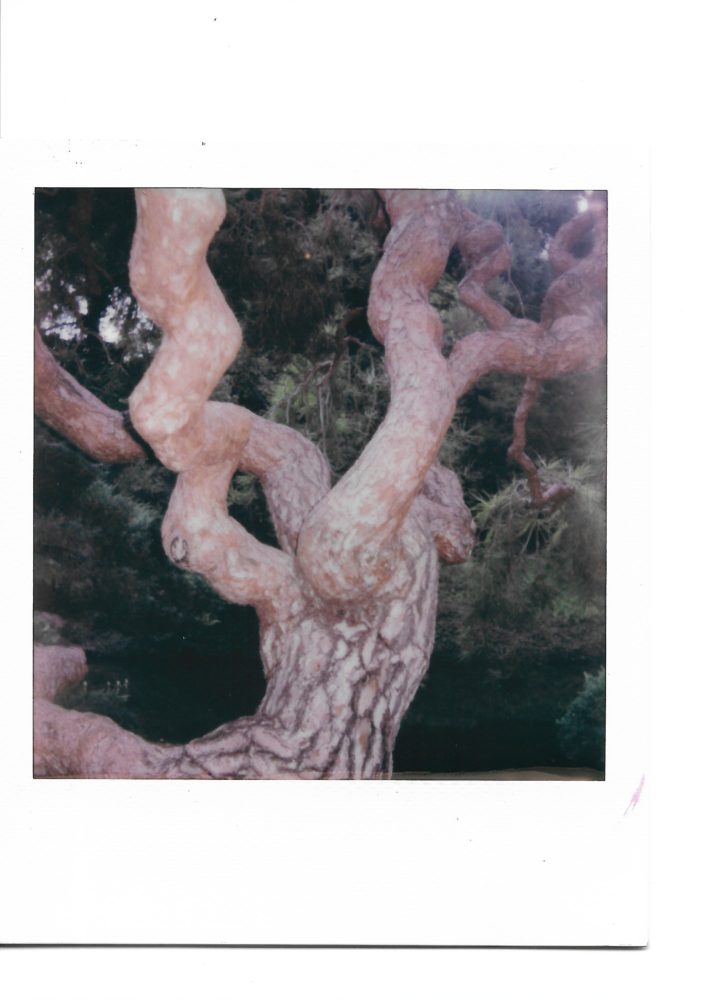
BANHART: I mean, I hate to say this, but if this tree could talk it would definitely be saying, “Come at me, bro.” It’s so muscular. Which is fitting, because this album was designed to be played at the gym.
GEORGESON: While you’re doing CrossFit.
BANHART: Pumping up, pumping down. Peloton. Bowflex.
GEORGESON: This tree definitely goes to the gym every day. It’s super groomed , it’s like its chest is shaven. It represents every bro that made us feel so inadequate as adolescents. But guess what? We grew up and made an ambient record. Who’s laughing now?
BANHART: This is the Mike “The Situation” Sorrentino of trees. I can’t believe I said that. I take it back, I take it back. This is a very special tree. We have to say something beautiful about it. I think it has more of a benign, demonic quality.
GEORGESON: I see that, yeah. It’s a compassionate demon tree.
BANHART: You know what? Just go ahead and write whatever you want. Forget everything we say. We trust you.
———
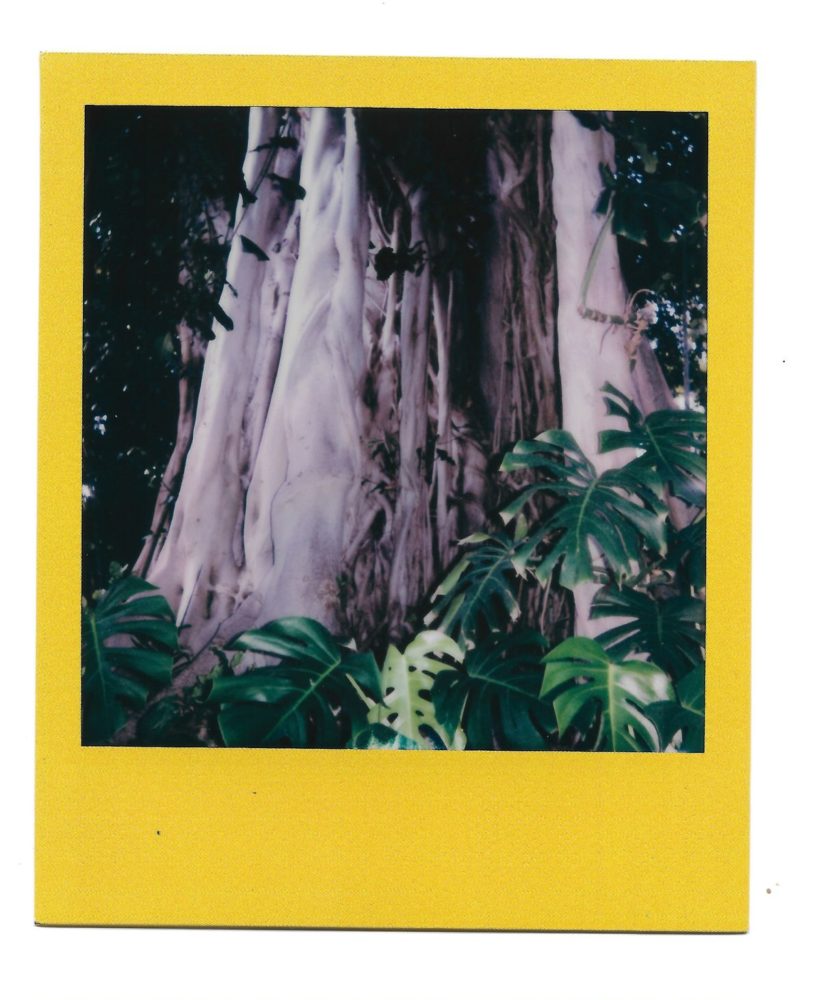
———
GEORGESON: Oh, wow. I took this at the Huntington Gardens. It’s got that weird, strangely cyborg, hyper-sexual vibe… Do you know what I’m talking about?
BANHART: No.
GEORGESON: I mean, it doesn’t look real. Wow. I mean, I don’t honestly believe that it’s actually a tree. I wonder if it’s fake. I’m mesmerized. This is good.
BANHART: Jeez. It has these tendrils and tendons. And there’s a muscularity that gives it a very erotic presence. It makes me think of “Into Clouds.” It looks like it’s been here since the beginning of time.
INTERVIEW: Which of you would survive longer in the wilderness?
BANHART: Noah would immediately eat me.
GEORGESON: Here’s the thing. I would eat you, but you would be the first meat I had ever intentionally eaten in my whole life.
BANHART: That’s beautiful. It’s a metaphor for our whole relationship as well.
GEORGESON: True.
BANHART: Survival, man. I once saw Bear Grylls on television squeezing an elephant shit over his open mouth to get the water out of it. He’s trembling with repulsion, but he’s getting hydrated. I would definitely squeeze Noah’s feces.
GEORGESON: I would eat your body, but that’s where I draw the line. The truth is, we would both be dead in about 12 hours.
BANHART: That’s generous.
———
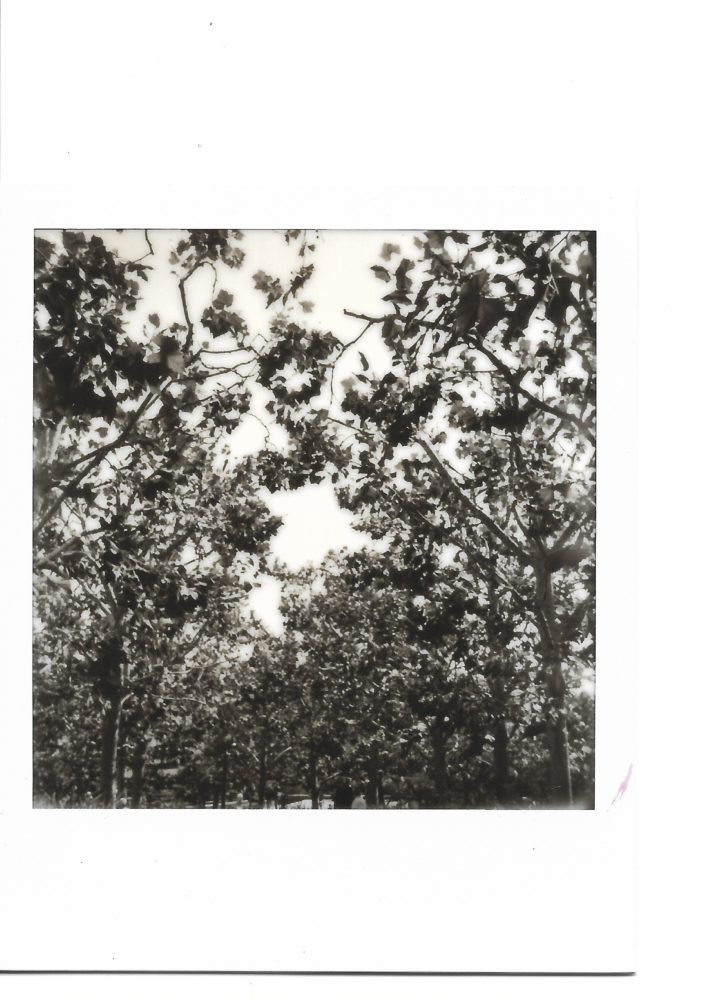
GEORGESON: Most people think that palm trees are native to Los Angeles, but they’re not. Actually, most of the palm trees you see around L.A. are reaching their natural age of death. We’re surrounded by geriatric palm trees that are all going to die at once. It’s terrifying, because those palm fronds will fall on you and they’ll just split you wide open.
BANHART: Anyways. Sycamore trees are native to Los Angeles. What’s happening in this photograph is something called inter-crown spacing, which is when trees almost touch, but they end up giving each other space. I think this is a metaphor for how the whole record works, because half of this record are songs influenced by Noah, and half of the record are songs that I influenced. That’s pretty poetic if I do say so myself.
———
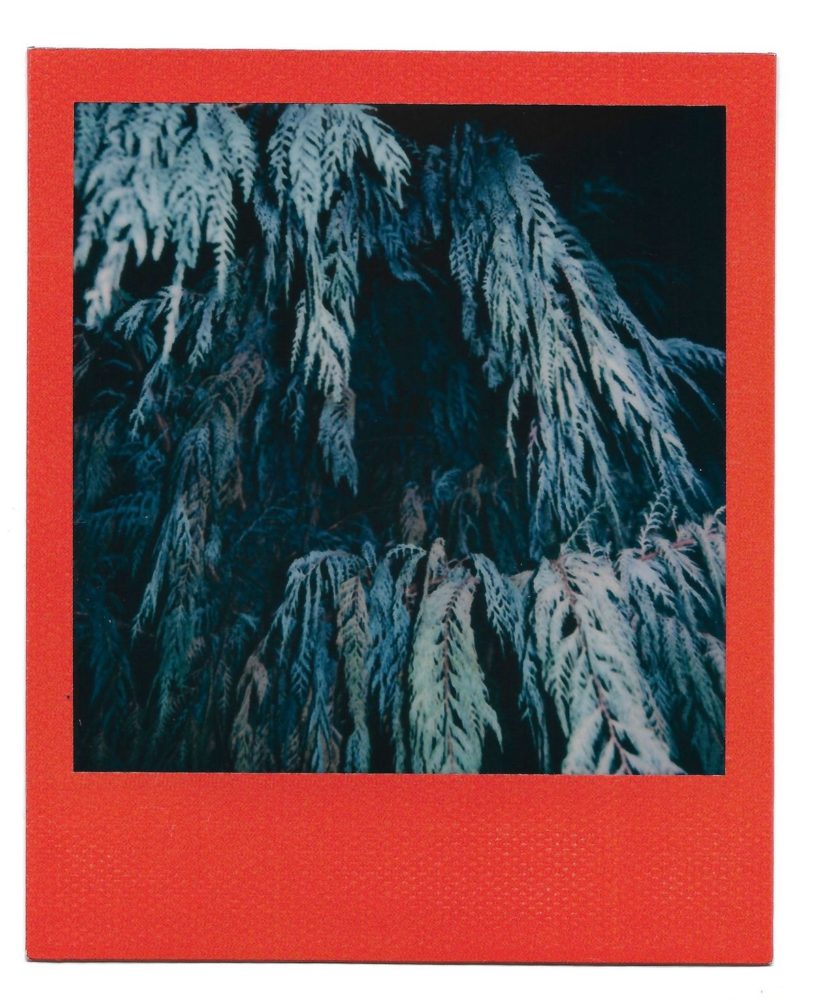
BANHART: This is a Himalayan cypress, which is a very fragrant tree, and it’s used in a lot of smoke offerings. There’s a song called “Asura Cave” on the album, which is made up of different recordings from my travels around Nepal. The vocals on that song come from a convent. The recording then moves to a monastery I visited outside of Katmandu, where everybody was in the middle of a three-year silent retreat.
———
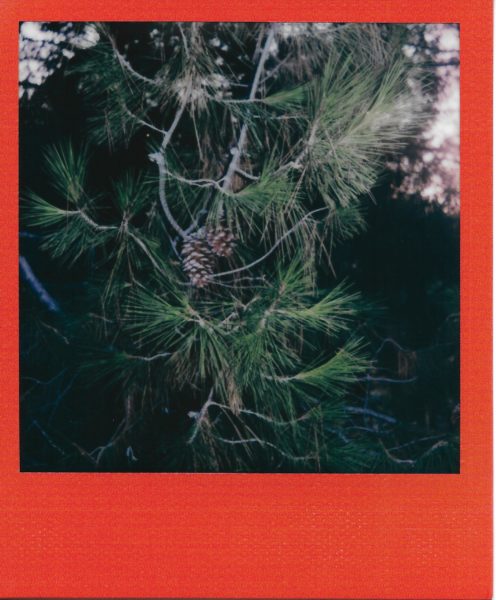
GEORGESON: I grew up in the pines in Northern California. This evokes something very deeply ingrained in me, and seeing this tree every day helps me reconcile living in Los Angeles. Los Angeles is a wonderful city, but I don’t always resonate with the landscape and the nature here. We’re in a desert, essentially. So this pine tree can immediately take me to a comfortable place. It evokes the last song on our record for me— “Aran In Repose.“ That song is influenced the cassettes that my parents played when I was young. This one has a very new age-y, ’80s vibe.
BANHART: 90% of our childhoods were spent in health food stores. Noah and I had very similar upbringings in that way, and that ritual was one of the touchstones of this record.A common point of reference for us was this nostalgic ’80s music that we would hear as kids growing up in California, and having new age-y, hippie parents.
INTERVIEW: Do each of you have a favorite aisle?
BANHART: Wherever the Nectar Nugget was, which was a healthy version of a Reese’s Pieces cup.
GEORGESON: You had to fight through the smell of the supplements to get to the treat aisle in the back. It was intense. You’d smell the vitamin B12 just permeating the air, but the reward would be carob chips.
———
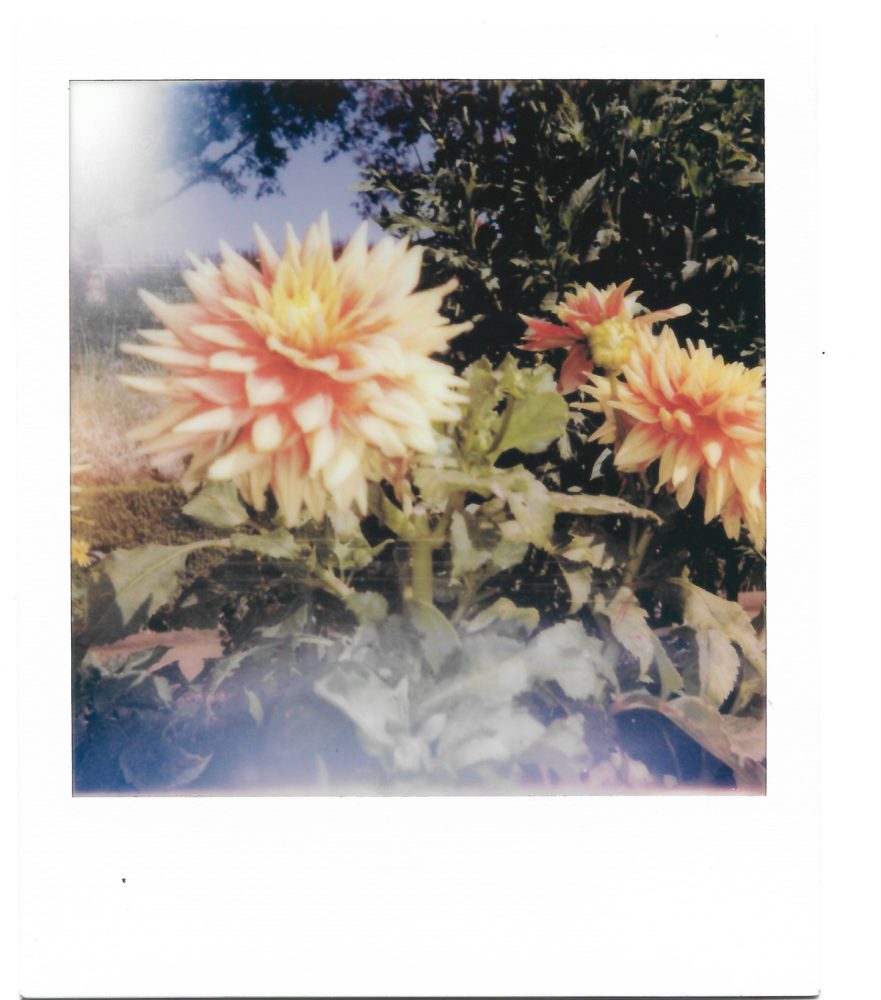
GEORGESON: It is not an aspiration of many musicians to make music that is, simply, relaxing. You can tune in and tune out. I’m okay with this record not being an active listening experience at all times. If we can give you a tiny little second of a refuge, a tiny speck of peace floating through the relentless tragedy of the world at the moment, I would feel extremely successful with this record.
———
Special thanks to POLAROID.

